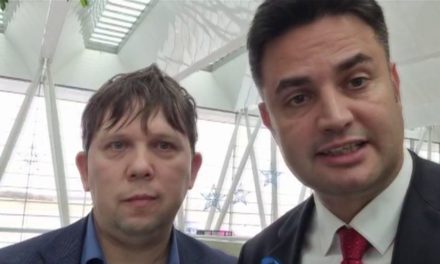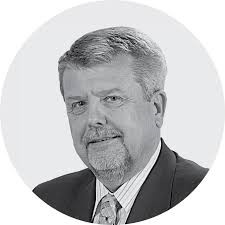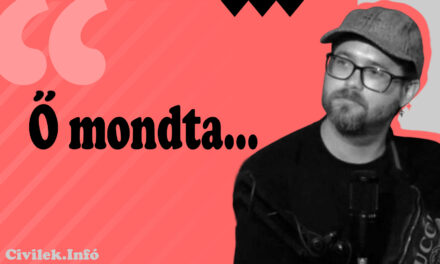Hungarian oncologists can participate in training courses that are completely equivalent to those in the West, Miklós Kásler said in connection with the recent conference of the Central and Eastern European Academy of Oncology held in our country. Interview.
The professor also talked about the fact that prominent oncology specialists took part in the conference. As he indicated, an international scientific conference and assembly will be held in May 2025.
Why was the Central and Eastern European Oncology Academy established?
In the years before the system change, like many other fields, the development of oncology in Hungary diverged from that of Western Europe. This also applies to the structure, scope of activities, screenings and prevention. After 1990, the leveling of the great differences between the West and the East faltered. Hungary was in a position where it could keep up with the West, but there was an ambition for the countries around us to start catching up with the West. This was the basic idea behind the creation of the academy. Since its establishment in 2019, 21 Central and Eastern European health ministers or state secretaries have signed the agreement that brought the academy under its roof. The fact that the ministers or secretaries of state of twenty-one countries signed the accession was due to the fact that by 2018 the National Oncology Institute had become accredited as one of the best cancer institutes in Europe, behind which the Hungarian oncology network was created - probably the first in Europe.
The first two years of the academy were a huge success, with an extremely positive response from Western Europe as well.
On what occasion did the oncology academy hold its conference in Budapest recently?
In the first two years after the establishment of the academy, we held numerous conferences with the participation of thousands of people. However, the coronavirus epidemic broke out, which made communication extremely difficult, but also provided an opportunity to organize online conferences. After the difficulties ended, we started the academy again after consulting with the Minister of the Interior Sándor Pintér, but even before that, in April of this year, we held an online conference. 16 countries took part in the June conference, and the participation of four countries – Slovenia, Montenegro, Croatia and Poland – was postponed only because of personnel changes and government transformations. A group of almost a hundred oncologists from Kazakhstan watched the congress together.
The congresses take place according to a specified logical order, namely according to the experience of the last two or three decades of Hungarian oncology, which means that the national cancer registry must be created, which contains the frequency and mortality data of the diseases. From these data comes every other task: what kind of structure needs to be created, how many beds are needed in the hospitals and what kind of equipment is needed. This is closely related to what the oncology structure of a country looks like. Hungary is also at the forefront of this at the Western European level. The national network was established with the creation of an oncology center in every county hospital.
I was able to present the last one in Salgótarján as a minister. This completes the Hungarian oncology care system. This should be developed by every country that is a member of the academy. Another important topic is how to prevent cancer. The disease is influenced by the effects that take place in the human body, such as hormonal effects, as well as external factors, such as smoking and alcoholism. These are called epigenetic factors. The complexity of therapies and diagnostics is also an important topic. The three legs of diagnostics are imaging diagnostics, laboratory diagnostics and histology. The most important parts of the therapy are surgery, radiation therapy and medication. Since there are at least 250 types of tumors histologically, and each requires a different diagnosis and therapy, it is therefore very important to have written guidelines for therapy, which we created in Hungary in 1994.
What feedback did you receive from the conference participants?
It was very important that the great personality of European oncology, Ulrik Ringborg, who is the director of the Karolinska Institute in Sweden, participated in the conference and offered to help revive the relationships that were established in the first two years, but were interrupted due to the pandemic. The professor congratulated the relaunch of the academy and emphasized that he met enthusiastic people and clearly saw the dedication of the young Hungarian generation. Andrej Kaprin, professor at the National Medical Radiology Research Center of the Russian Ministry of Health, considered it a great honor to be able to report on their latest achievements in oncology at the conference. According to his feedback, the congress was organized at the highest professional and scientific level, which he believed opened a new chapter in the cooperation of Eastern European countries. He also explained that they are ready to share their own experiences in different fields. The professor is convinced that the cooperation between Russia and Hungary has a great future in the fight against cancer. Georgia's Rema Gvamichava, a professor at Tbilisi State Medical University, believed that the academy provided unique opportunities for professional development and networking. He highlighted the excellent organization of the event, both in terms of the professional and cultural aspects, and also indicated that he would like to expand the cooperation in all possible directions.
How can the joint work between the members of the academy be further strengthened?
At the beginning of the year, we prepared the programs for 2024 and 2025. This autumn, we will hold two online conferences, the topics of which will be imaging diagnostics and laboratory diagnostics in oncology, and we will also launch our scholarship programs. At the beginning of next year, we will hold several online lectures, which will discuss personalized therapy, surgical methods, skin tumors, neurological tumors, gastrointestinal tumors, and radiation therapy treatments.
And in May 2025, we will hold an international scientific conference and general assembly. Hungarian oncologists can participate in training courses that are completely equivalent to those in the West.
How did oncology research develop in Hungary?
The first record worth mentioning dates back to 1905, when Professor Gyula Dollinger assessed that five thousand died of cancer in one year in what was then Great Hungary - it should be noted that this number has now reached 33 thousand, and the increase is characteristic worldwide. A tragic situation arose in Hungarian oncology after the First World War, as our country could not obtain radium, so radiotherapy treatments were not possible. This changed in 1934, when Belgium began to supply radium to Hungary, and the Bakáts tér Oncology Institute was established, which was succeeded by the National Oncology Institute. The II. After the Second World War, Sándor Eckhardt's name is associated with the international appearance of Hungarian oncology, and from 1990 the institute itself appears on the international scene.
The full interview can be read in Magyar Nemzet!
Featured image: Hungarian Research Institute













